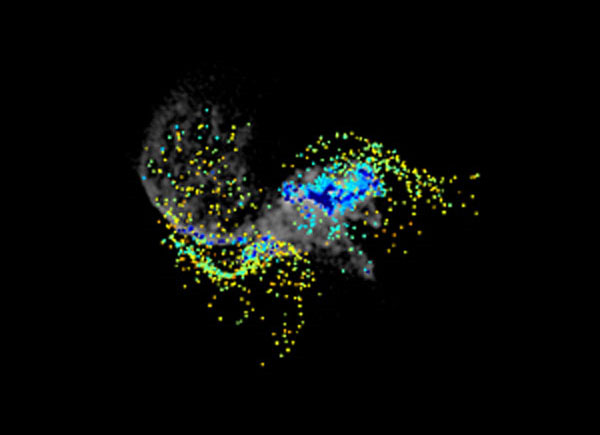Constellations 13 billion years old
Our Milky Way series is surrounded by nearly 200 dense constellations, each with about one million stars on average. At the age of 13 billion years, these spherical constellations are as old as the age of the universe itself, which was born at the same time as the formation of the first generation of stars and galaxies.
German and Dutch astronomers now deploy new computer models to see how they form. They found these giant constellations to be the survivors after the 13 billion-year-old destructive forces had erased many smaller constellations.
Globular constellations share a characteristic of interest - the number of typical stars of each constellation is quite similar throughout the universe. This is in contrast to the young constellations, which contain quite a random number of suns, from under 100 to thousands. The scientific group proposed to explain this difference is due to their formation conditions in the development of host galaxies.

They use simulations of single or colliding galaxies including the formation and destruction of constellations. If galaxies collide, they create spectacular star-forming explosions (starburst) and countless young, bright, and multiform constellations. From that point on, it is assumed that the number of constellations always increases during the stellar explosion. But the German-Dutch scientific team with the computer model gave the opposite result.
While the largest and brightest constellations are more than capable of surviving the galactic collision due to their gravitational pull, countless smaller constellations are annihilated by the rapidly changing gravitational force. in the starburst process with the movement of gas, dust and stars. The electromagnetic waves of the stellar explosion last for 2 billion years, and researchers are surprised to find that only large numbers of constellations exist. They have enough features about a population of spherical young constellations like we are looking at them 11 billion years ago.
'It is ironic to know that the stellar explosions produced many young constellations, and at the same time eradicated most of them ,' said Diederik Kruijssen from Max Planck Institute of Astrophysics in Garching, Germany. "This happens not only in galactic collisions, but also in stellar explosive environments. During the early universe, stellar explosions were too normal; therefore it was very reasonable." when all spherical constellations have relatively equal number of stars, smaller constellations, with fewer stars, have been wiped out. "
According to simulations, most constellations are destroyed immediately after formation because the galaxy environment does not allow young constellations to exist. After this period ended, the spherical constellations quietly survived to this day.
There are further suggestions for scientists to review their ideas.'In the surrounding space there are several examples when galaxies have just experienced massive stellar explosions ,' Kruijssen said. 'So it is possible to observe the rapid destruction of small constellations. If the observations truly confirm this, the theory of origin of spherical constellations will be confirmed. "
The computer model shows that most of the typical characteristics of the constellation of spheres appear as soon as they form. The fact that spherical constellations are comparable everywhere has shown that their forming environments are quite similar, no matter which galaxies they separate. In this situation, Kruijssen believes that they will be used as fossils to further clarify the early conditions that form the first stars and galaxies.
- Legend of 12 constellations
- Hubble discovered the giant constellation
- The transformation of the constellations in the future
- Telescope Australia detects more mysterious radio signals
- The universe may be 'younger' than 2 billion years old
- Life on Earth may have started over 4 billion years ago
- Detected 3 billion years old water
- Why is Rigel and why is it so bright?
- The sun will destroy the earth within 7.6 billion years
- The cause of animal evolution halts for two billion years
- Found 2 billion years old water
- Thai Son - A natural wonder
 Van Allen's belt and evidence that the Apollo 11 mission to the Moon was myth
Van Allen's belt and evidence that the Apollo 11 mission to the Moon was myth The levels of civilization in the universe (Kardashev scale)
The levels of civilization in the universe (Kardashev scale) Today Mars, the sun and the Earth are aligned
Today Mars, the sun and the Earth are aligned The Amazon owner announced a secret plan to build a space base for thousands of people
The Amazon owner announced a secret plan to build a space base for thousands of people